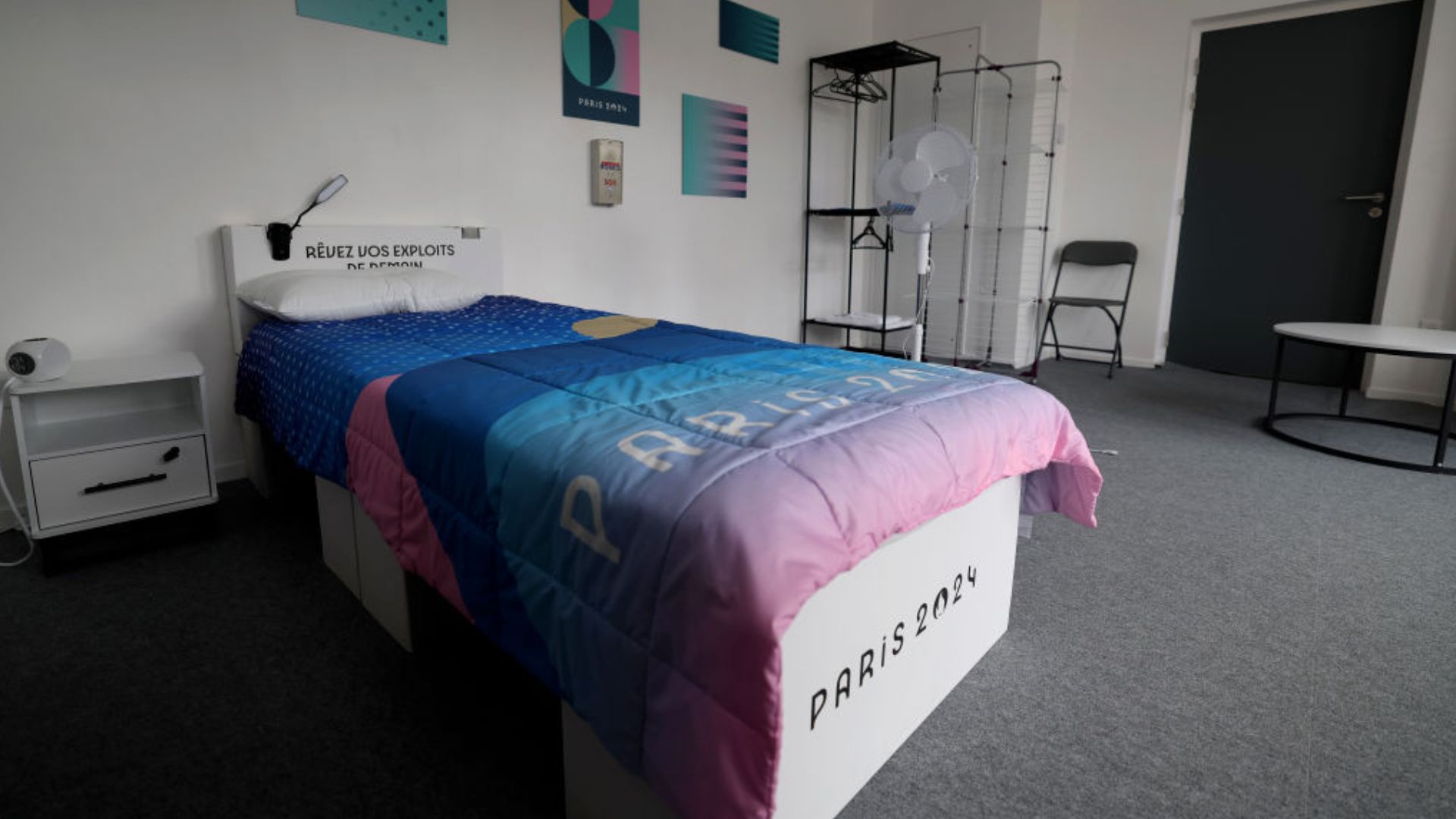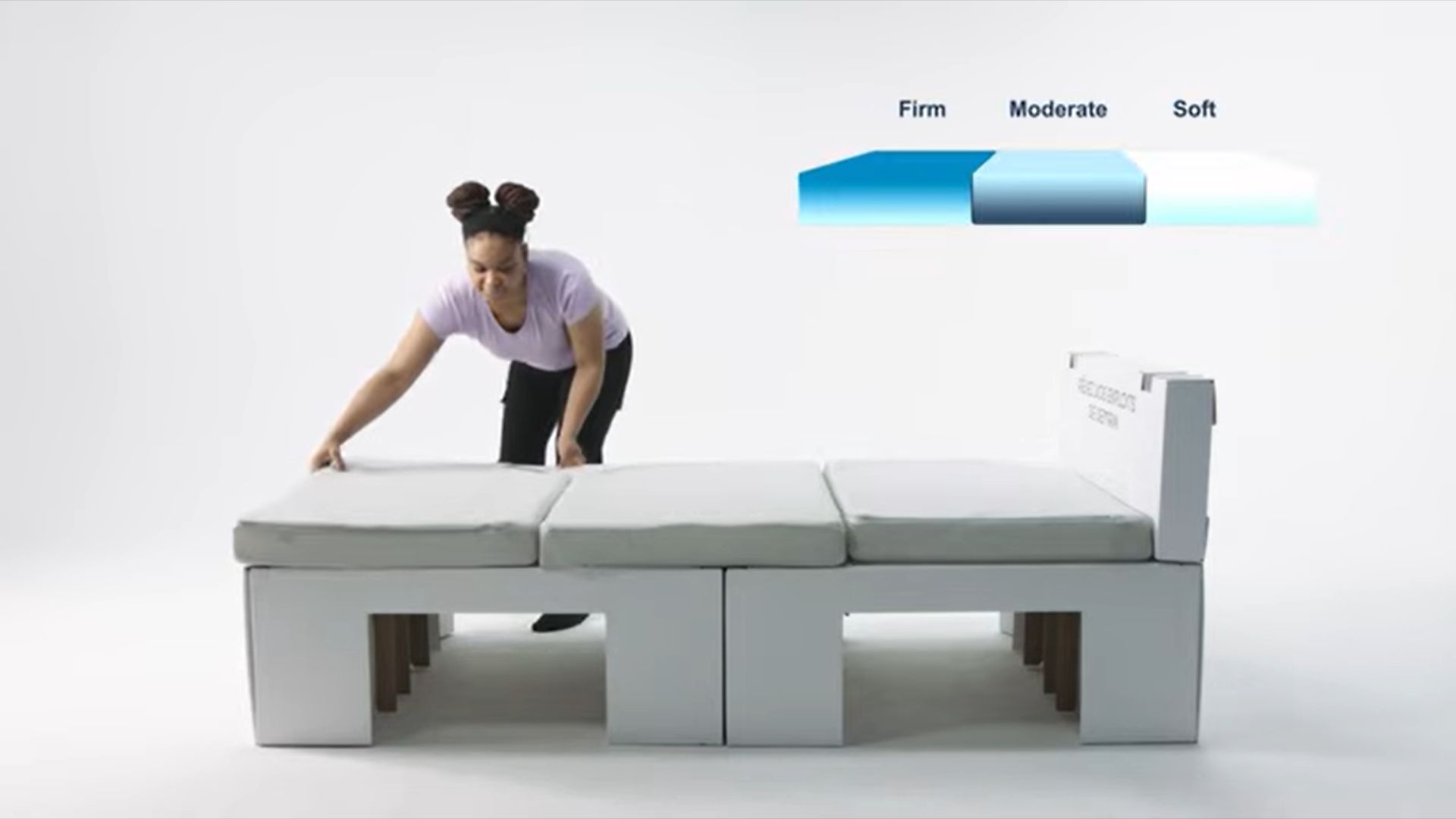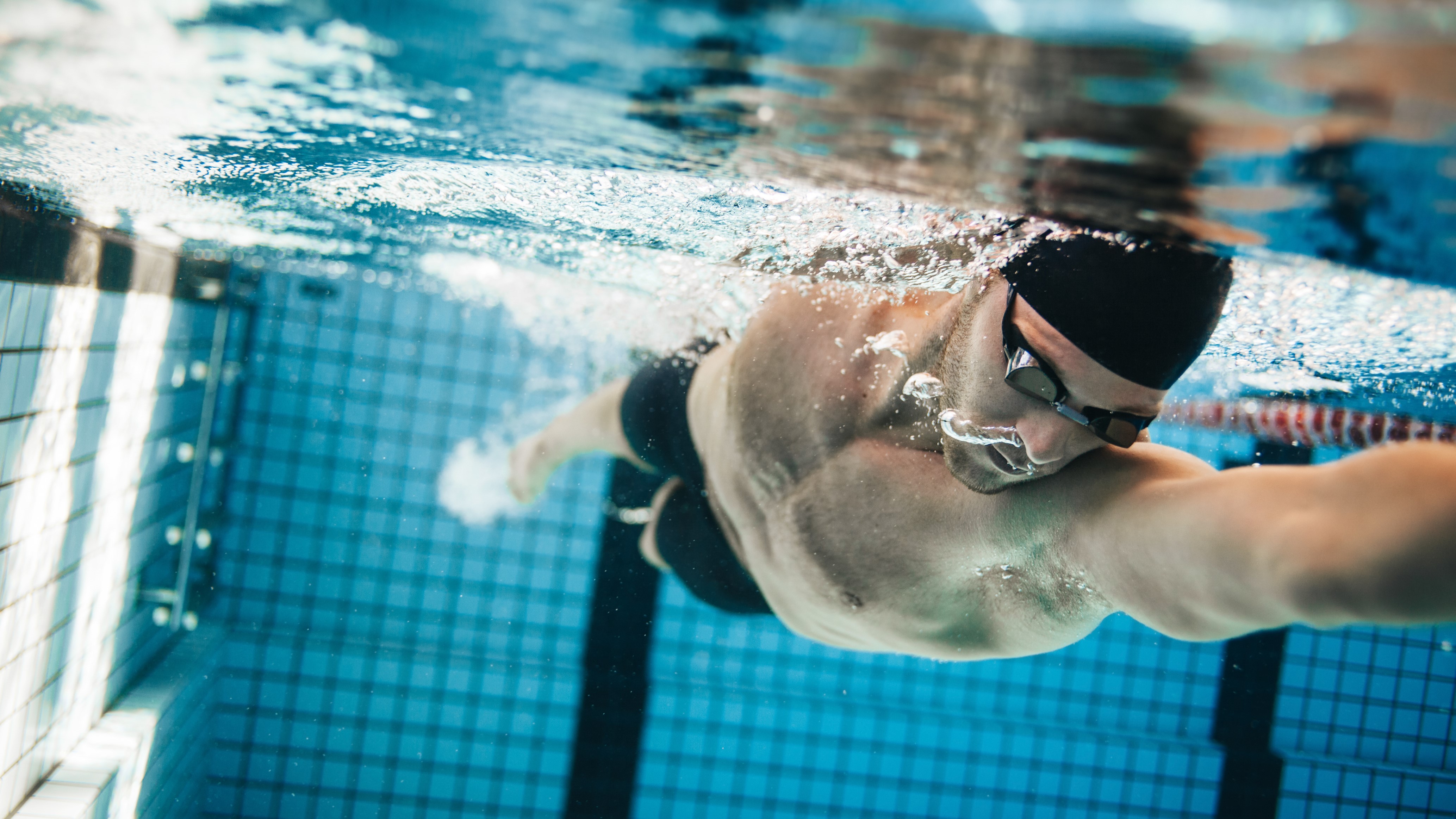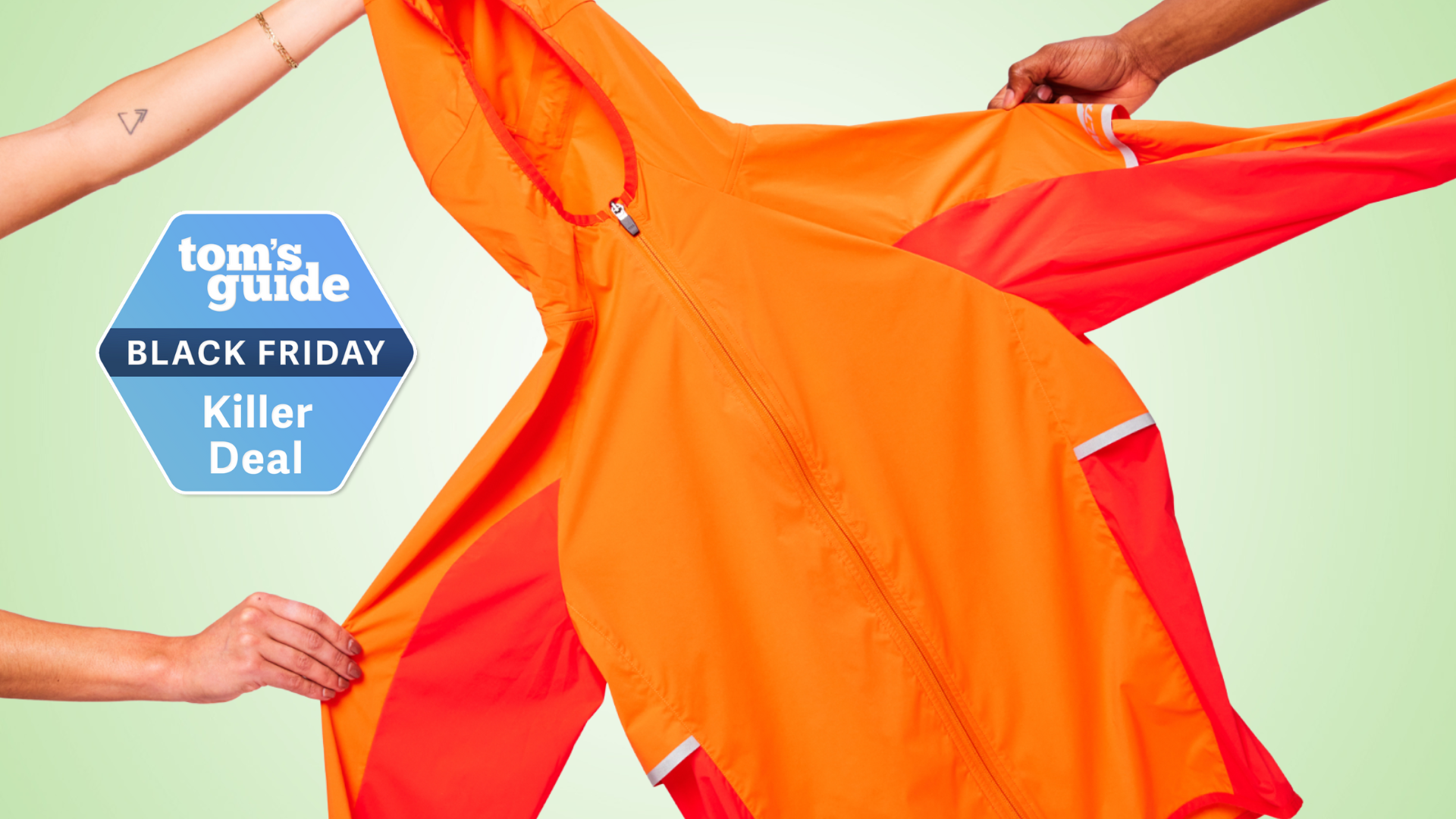'My back is about to fall off' — why everyone's talking about the cardboard beds at the Olympics
Plus, how poor sleep could impact the athlete's performance in the Paris Olympics

The Olympics represent the pinnacle of sporting achievement, but for some of us the most exciting drama isn't on the track or in the pool — it's happening in the Olympic village. Because, yes, the superhumans of sport are once again sleeping on cardboard beds crafted by Japanese bed-maker, Airweave.
We know from testing the best mattresses of the year how much of an influence your bed has on the overall quality of our sleep. So why has the Paris Olympic committee foregone the gold-medal comfort of a foam or hybrid mattress for woven beds and cardboard frames?
It's all in the name of the environment, and while those mattresses might look unconventional, they've earned perfect 10s from some competitors... although others are less convinced by their comfort. Let's take a closer look at the carboard beds in question, plus explore how poor sleep could impact the Olympic athlete's performance in the Paris 2024 games...
What is an Airweave mattress and why are they being used at the Paris Olympics 2024?

Paris 2024 has partnered with high-tech mattress company Airweave to kit out the Olympic village. These innovative mattresses use Airfiber technology; polyethylene strands woven together to create a responsive and breathable bed fill. Each mattress consists of three Airweave mattress blocks covered with a plush topper.
Even more unusually, these mattresses are being held up by bed frames made of cardboard. We've tried some of the best bed frames and bases, and none of them have ever been the box the mattress came in.
There's an environmentally-conscious reason for all this. The Paris Olympics 2024 aims to be a more sustainable games, and Airweave mattress blocks can be washed, reused, and redistributed with a second-life partnership. The cardboard bases can, of course, be broken down and recycled as soon as the Olympic flame is extinguished.
And while they might sound odd, the Airweave mattresses have their own distinct sleep benefit. Each block has a different feel on either side, with four different firmness levels to choose between. With three blocks making up a bed, that's 64 potential possible mattresses.
Get instant access to breaking news, the hottest reviews, great deals and helpful tips.
One rumor we're happy to bust is that these beds were chosen because of last year's bed bug outbreak. Airweave was announced as partner in March 2023, before all the problems with creepy crawlies.
Are the Airweave mattresses comfortable to sleep on?
The Airweave mattresses might be reusable, breathable, and washable, but for the Olympic athletes there's a more pressing concern: are they comfortable? Reviews appear to be mixed.
On TikTok, members of the South African Olympic team have rated the mattress anywhere from 10/10 to 1/10 – that's from gold medalist to failing to make it past the heats. Other opinions range from "0 issues" to "my back is about to fall off".
But 'mixed results' isn't unexpected from any mattress, as it's important to choose a bed that suits your sleep style and build. The main criticism is that the mattress is too firm. While a firm bed can suit back and stomach sleepers, it isn't ideal for side sleepers. The Airweave blocks also appear to be on the thin end of the mattress depth scale, which, again, benefits stomach and back sleepers.
However, Olympians are in agreement that the Airweave isn't the "anti-sex" bed that some have dubbed it. As demonstrated in an eye-opening TikTok, the mattress and bed frame can withstand two members of the Irish rugby sevens team jumping on it. So it can certainly put up with other nocturnal activities.
How to make an Airweave mattress more comfortable
1. Add a mattress topper
Adding a mattress topper is one of the best ways to make a firm mattress softer, by increasing cushioning without sacrificing support. Airweave does seem to have provided a plush mattress cover for the athletes, but an extra topper can enhance the pressure relief further. Good news for, say, any side sleeping shot putters who want some cushioning at the shoulders. Or Team Australia, who took advantage of next day delivery to bulk order toppers for their athletes...
2. Change sleep positions
Firm mattresses are typically best for front and back sleepers, while they often lack the cushioned comfort a side sleeper needs. Switching to sleeping on your back is a short-term solution for any side sleepers suffering from numb shoulders and dead hips. To avoid rolling over in the night, place a pillow either side of your body, with another under the knees to help maintain an aligned back sleeping position.
3. Place a pillow under the small of your back
The lack of cushioning on the Olympic mattresses might mean some athletes are seeking much-needed pressure relief to help them sleep. Tucking a pillow under the small of your back can add cushioning to the lumbar region, alleviating aches and pains. It essentially acts as targeted relief for anyone who can't get their hands on a mattress topper.
Could poor sleep impact Olympic performance?
A few nights on a bad cardboard bed could be more than just a pain in the neck — it might have an impact on how well the athletes perform. There's a strong relationship between sleep and wellness, with a 2023 systematic review finding increased sleep duration to be one of the most effective ways to improve physical performance.
"Getting a good night’s rest encourages top performance among athletes, increasing the ability to be faster, stronger, more energized and better thinkers," explains Sam Hopes, senior fitness writer here at Tom's Guide.
Each stage in our sleep cycle is important to the body, but it's during the third stage of the cycle — deep sleep — that we see the most performance benefits. As well as boosting energy levels, deep sleep is necessary for the body to restore and grow. It's a symbiotic relationship: deep sleep aids activity, while remaining active helps you achieve consistent deep sleep.

And any athletes in tactical sports will want to ensure they're getting enough REM sleep, as this is crucial for memory development, quick thinking, and, decision-making.
On the other side of the coin, studies indicate even a single bad night's sleep can be detrimental to physical performance (bad news for any athletes struggling with the first night effect). "Over time, operating on less sleep or a compromised sleep schedule can negatively impact athletic performance, leading to fatigue and reduced cognitive and physical performance," explains Sam.
"This could include decreased reaction times and speeds, poor decision-making, low mood, fatigue, slower recovery and susceptibility to illness or injury.It’s more likely to occur when athletes travel for competition and are at risk of jet lag, shifting the natural circadian rhythms."
"The key to optimizing your athletic performance includes managing your sleep hygiene carefully for a restful night’s slumber," says Sam. Sleep hygiene looks different for everyone, but prioritizing a nighttime routine can help you drift off when placed in a new, high-stress environment.
But for any athletes who happen to finish in the dreaded fourth place, it’s probably best not to blame the mattress. After all, everyone in the Olympic village is using the same bed.

Ruth is an experienced Senior Staff writer at Tom’s Guide, covering all things sleep and mattresses. She writes to help people sleep better, from how-tos to the latest deals to mattress reviews, and has interviewed an array of experts who share her passion. She is also our specialist on memory foam — she’s flown around the world to see memory foam being made — and leads our hotel mattress content. She has a deep interest in the link between sleep and health, and has tried enough mattresses, from Helix to Nectar to Simba, to know the right bed really can make a difference to your wellbeing. Before joining the team at Tom’s Guide, Ruth worked as a sleep and mattress writer for our sister website, TechRadar.
